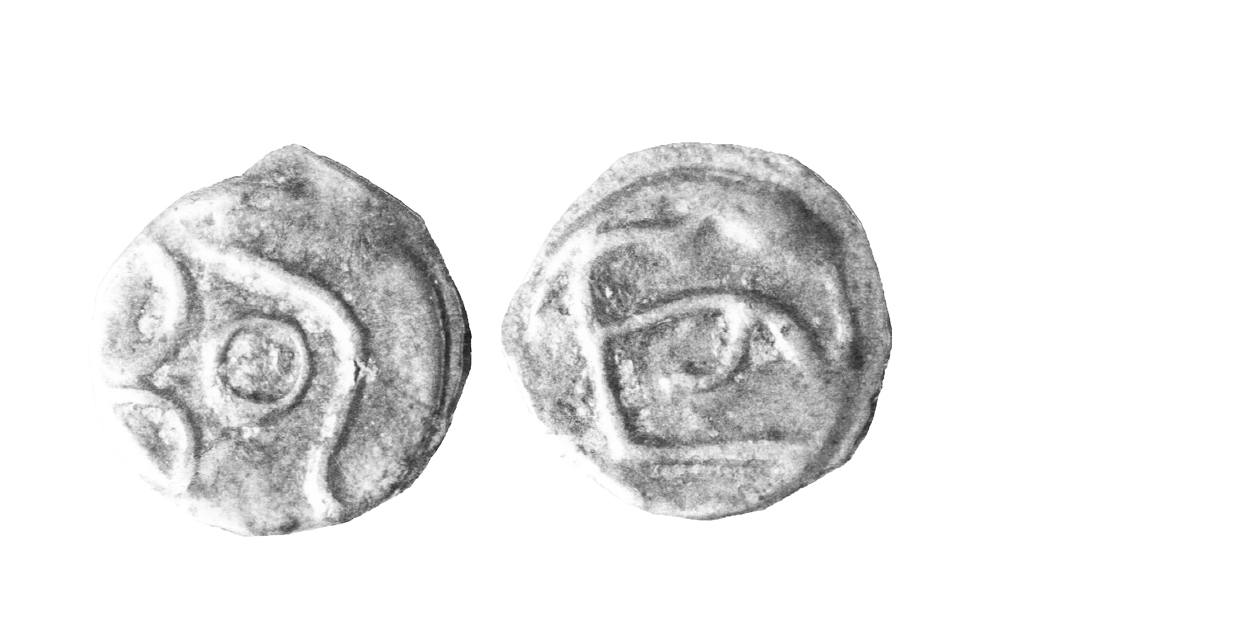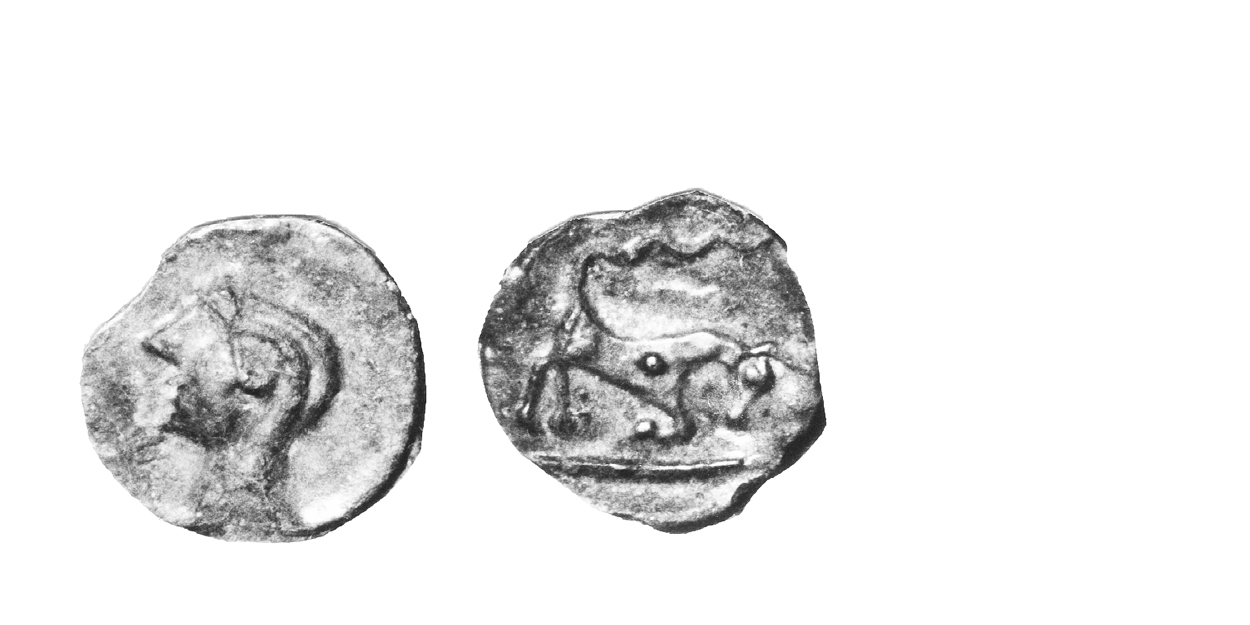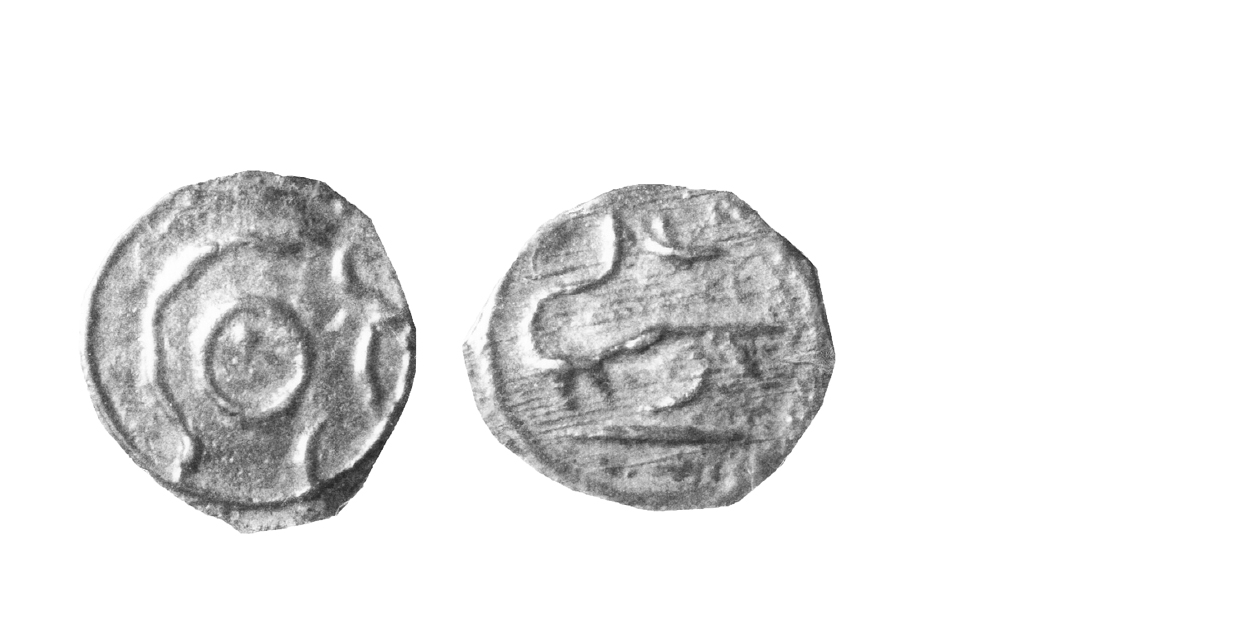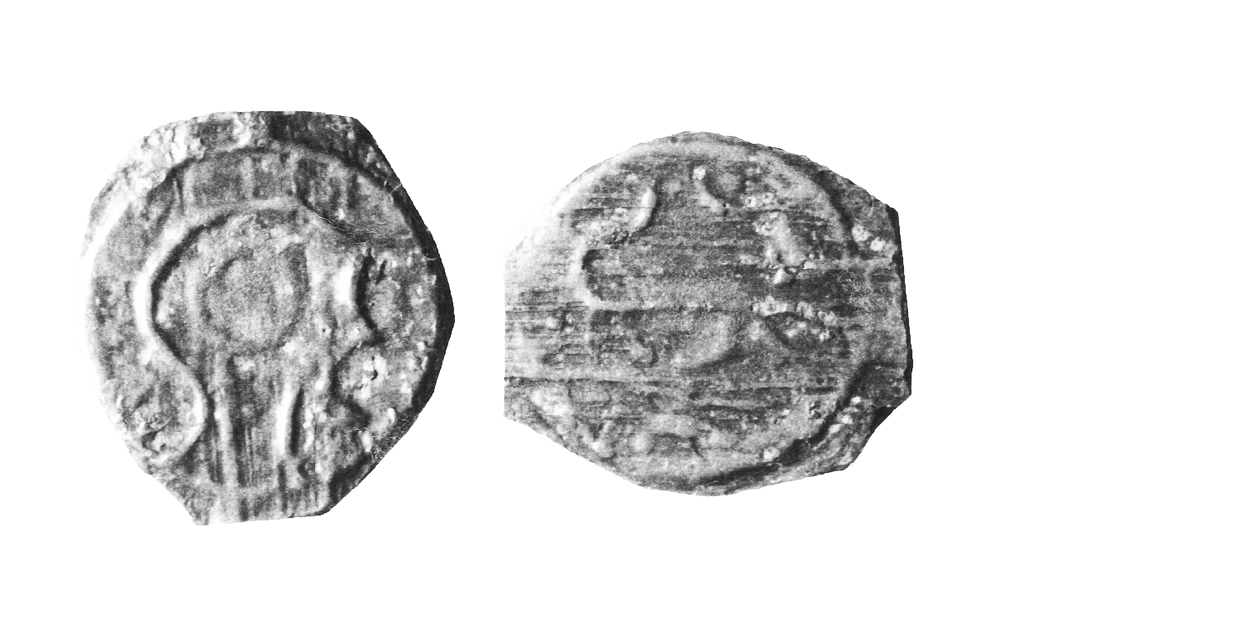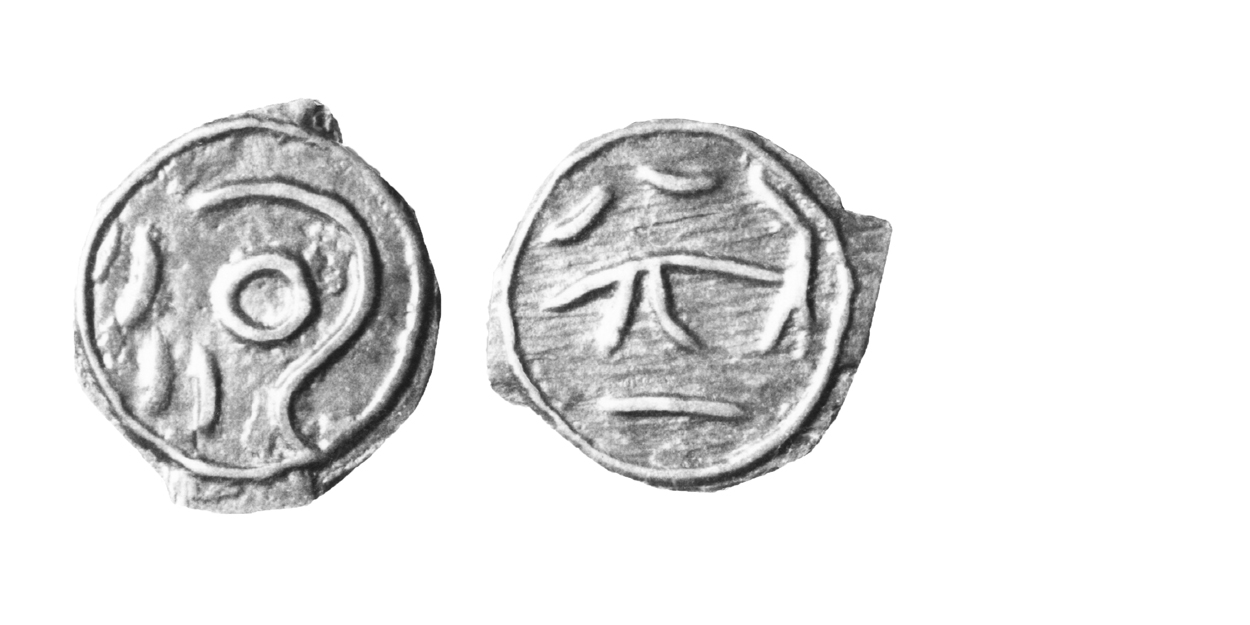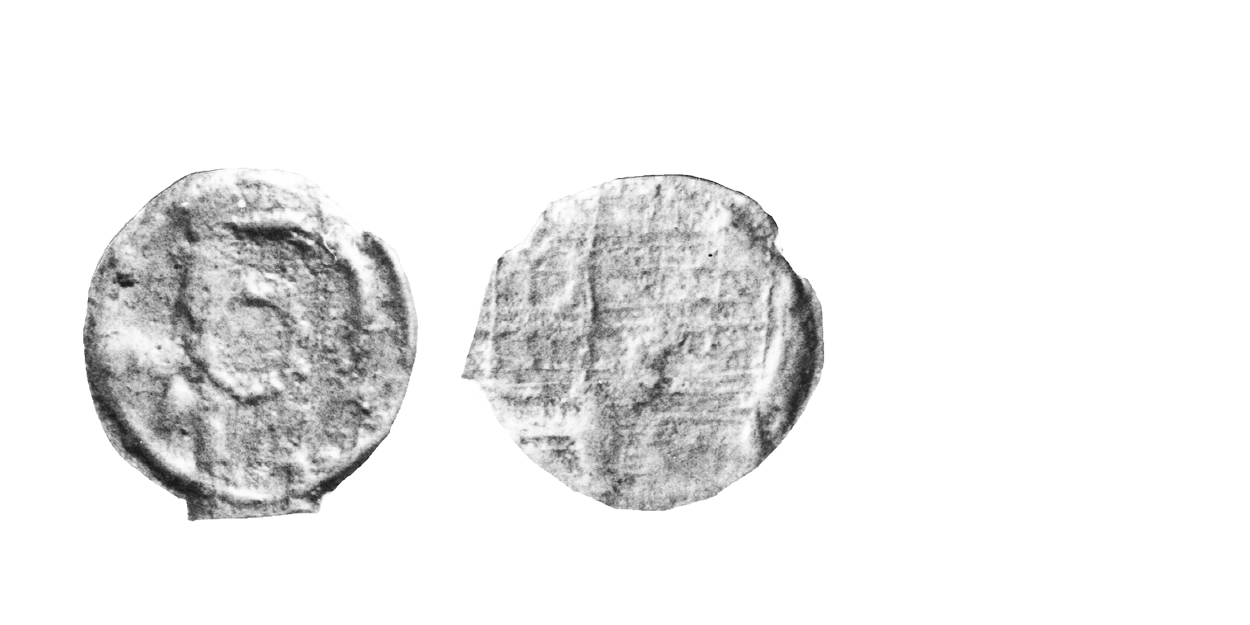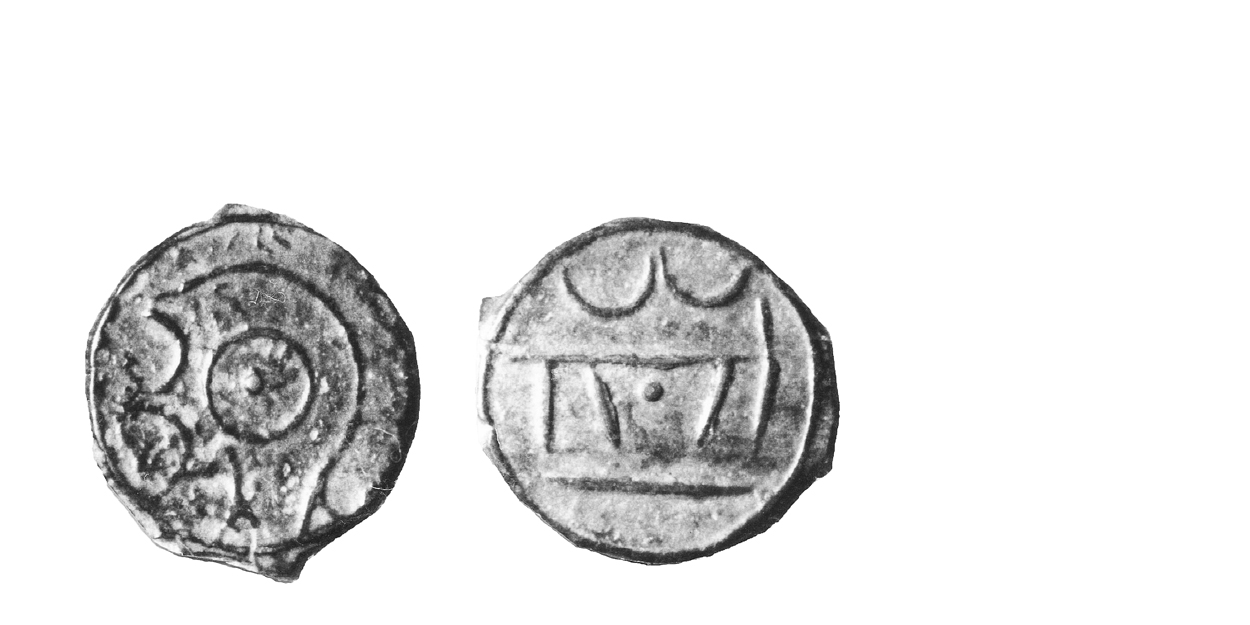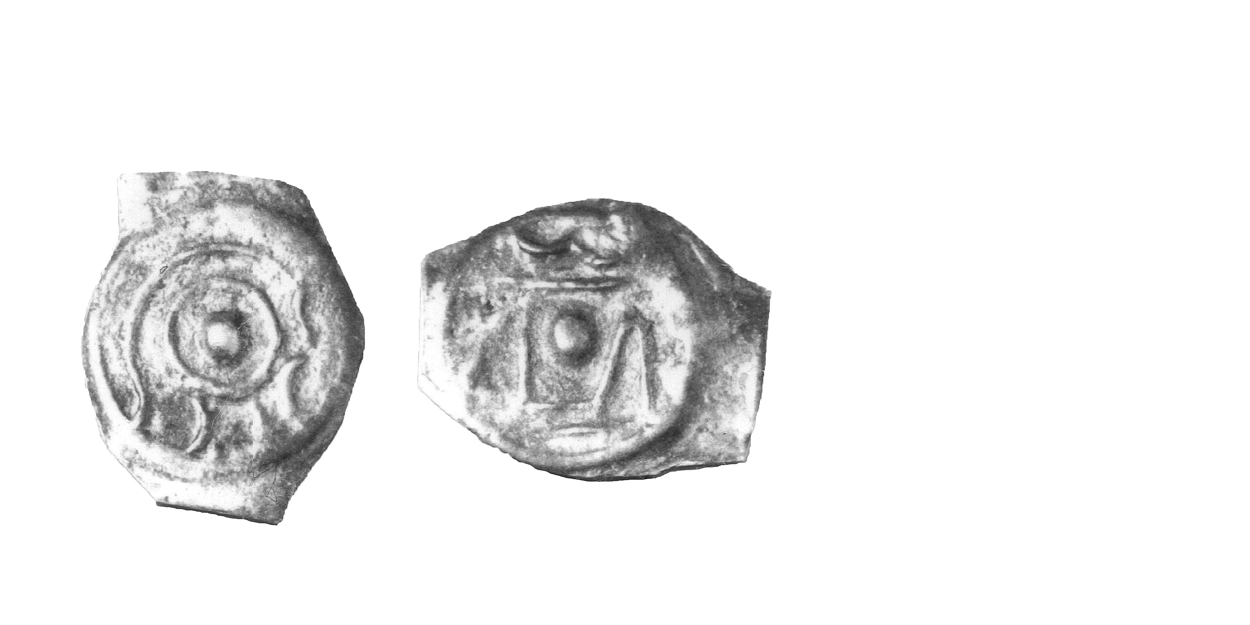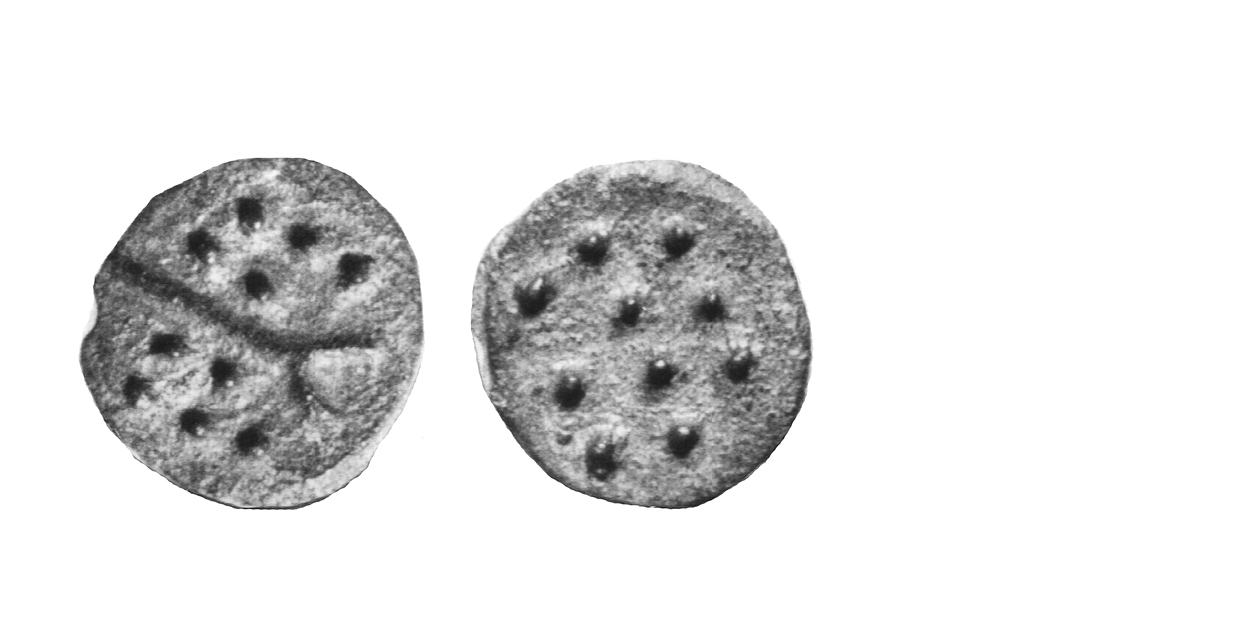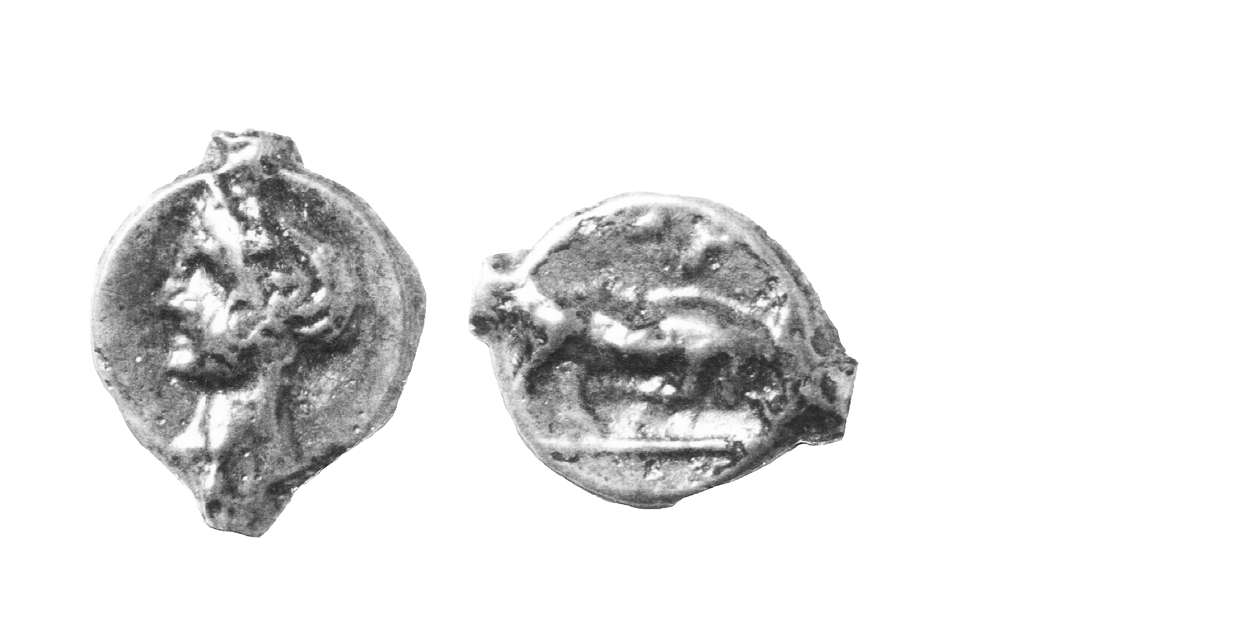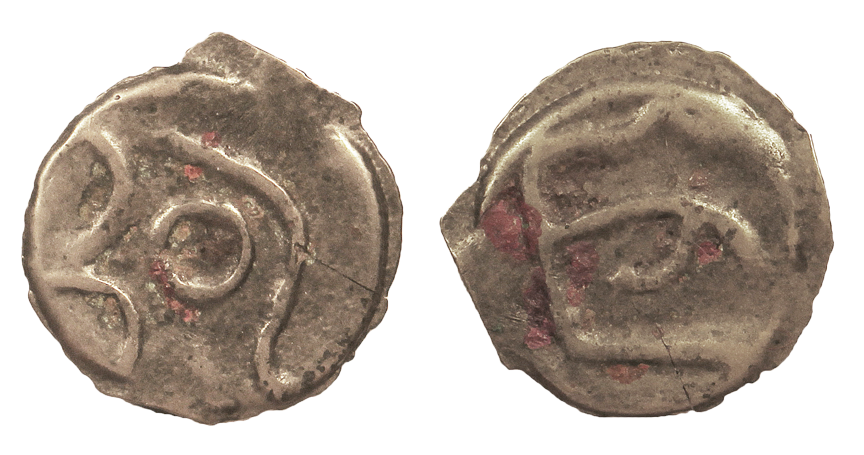
About the Coins
Manufacturing Methods (Info)
The Cast Coinages
Three distinct series of coins were cast, all in bronze. The first type, the Cast Bronze Coinage of Kent, demonstrates the Celts' innovative ability at its best (109). The moneyers attained a remarkable level of casting technology as they experimented with and improved their methods of manufacturing moulds.
The second type, the Durotrigan Cast Bronze Coinage follows the tribe's struck coinage and dates considerable later than the Kentish series. The Durotrigan coins do not seem to be the technological inheritors of the Kentish ones and the level of casting expertise is not as developed.
The third series, the Thurrock Types, are an early coinage likely cast along the north bank of the Thames. This attribution remains controversial, and the possibilities exist the the coins were Kentish or Gaulish instead.
The Cast Coinage of Kent
The Kentish series has previously been referred to as a "potin" coinage, using the French word for a high-tin alloy of bronze. This designation is unfortunate because the word has no exact English counterpart. Furthermore, it fails to communicate the nature of the alloy correctly because it implies a higher percentage of tin than occurs in the Kentish coins. The Kentish pieces are made of a copper-tin alloy with generally less than twenty-five percent tin. Archaeologists routinely refer to such alloys as bronze, or tin-bronze if the tin percentage surpasses twenty-five percent. Additionally, the British coins appear to be earlier than the Gallic Potin coins and are not a derivative type. Consequently, the misleading term "potin" should no longer be used for the Kentish series and instead the more accurate and descriptive "cast bronze" is used.
The Kentish Cast Bronzes progressed through five stages, beginning around 100 B.C. and ending sometime after the Gallic War. The coins were all cast in clay moulds, several coins at a time, in a line, and connected by runners. The method of producing the moulds exhibited a complex series of changes, denoted by five distinct periods, as the Celtic moneyers improved the casting techniques to speed up production.
Prototype Period (Image)
The first coins, inspired by the cast bronzes of Massalia are all extremely rare and were only produced for a short period. On the very first pieces, the images appear to have been impressed on the moulds using a "mother coin", but this technique was soon replaced by scribing the image into the mould cavities with a stylus. Both types of moulds produced rather thick and dumpy coins compared to the later issues.
Experimental Period (Image)
It was soon decided to reduce the metal content of the pieces, but to maintain the diameter. As a result, the coins became much thinner in the next period. The mould cavities were now made by pressing a cylindrical object into the clay, perhaps a polished wooden dowel. The edge of the coin, the sprues connecting one coin to another on the runner system, and the image were all inscribed with a blunt stylus. Production problems cropped up in this period, the moulds did not mate very well and the metal squeezed out to produce "flash". The moulds were often misaligned, producing an offset between the obverse and reverse. The Experimental Period coins are all extremely rare, evidently the mould production methods were quickly abandoned.
Innovative Period
The moneyers then entered into a period of great innovation in mould production. To produce better-mating moulds, various techniques of smoothing the clay surfaced were tried. All of these methods produced striations in the fields of the coins, four distinct types are known. Scrapers were drawn across the clay blocks, leaving Thin Striations, or a block was cut in two by a wire, producing Medium Striations. The clay was pressed against a flat wooden surface, producing Heavy Striations, or textile was pressed into the clay to produce the cavities, resulting in Crossed Striations. The coins with Medium, Heavy and Crossed Striation coins are all extremely rare and those with Medium and Heavy Striations often have excessive flash. These three techniques must have been tried first and quickly rejected. The Thin Striation coins, although still rare, are much more common today, indicating this technique was more successful and was used for a longer period.
Optimization Period (Image)
A final technique was employed before a great outpouring of coins occurred. The coins were now produced from expertly-made moulds and are among the most exquisite examples of cast coinage ever produced. They are extremely thin, flat and have smooth fields. Flash seldom occurs and mould misalignment was now completely eliminated. There are so few flaws in the coins, the mould manufacturing methods are today difficult to detect. Probably sheet bronze was pressed on the clay to smooth the mating surfaces and the cavity-and-sprues pressed in with a bronze form. The cavities were pressed in using an indexing system and the moulds were then held together by another alignment system during casting. These innovations successfully eliminated the obverse-to-reverse offsets seen on many earlier pieces. Optimization Period coins are very common, thousands existing today.
A remaining problem, however, continued to haunt the moneyers. The sprues had to be narrow to break the coins apart easily after casting, but had to be wide enough to fill the cavity before the metal solidified. The desired trade-off was never successful achieved – either the coins broke apart improperly or the moulds failed to fill completely on some coins.
Adjustment Period (Image)
This last problem was solved by change in policy. The coins were now made smaller in diameter but thicker, so the moulds could be filled quickly. Furthermore, the resulting coins were thick and strong enough to break apart without cracking. Although the coins could now be produced efficiently, they became thick and dumpy again. Adjustment Period coins are scarce, indicating the policy change making the coins dumpy again proved to be unacceptable. At this point, shortly after the Gallic War, the Kentish tribes introduced a struck bronze coinage and discontinued the casting process.
Implications
The Kentish Cast Coinage was produced in great quantities. Much effort was expended to speed the production methods. So many coins were produced that they must have been used as an everyday means of exchange. This large-scale production of coins of low intrinsic value points to a money economy in the southeast of Britain at a very early date (perhaps as early as 100 B.C.).
The Durotrigan Cast Coinage (Image)
Less is known about the Durotrigan series. At first, the tribe struck coins in gold, then white gold and later silver. The silver coins were fairly quickly debased to billon and finally bronze. The earliest cast bronzes appear to follow the struck bronzes stylistically, so there is a continuum from the struck gold staters to the cast bronzes. It is possible by the time the struck coins were debased to bronze, they were of very low intrinsic value. Consequently, as little effort as possible was devoted to their manufacture. At this point, casting replaced striking, there being no objection to the resulting dumpiness of the coins.
The mould production techniques were kept as simple as possible, as demonstrated by the stylistic sequence of the pieces. At first, the images approximated those on the gold staters, but they gradually degraded to simpler forms, using only dots.
Thurrock Types (Image)
The Thurrock Types are known from what appears to have been a hoard of rejected coins deposited in a sack. The sack contained all the known varieties produced and was likely buried not far from the mint. A thin scatter of individual coins also occurs throughout Kent and along the north bank of the Thames Estuary. The coins were produced in two-part moulds, but none of these have been found. The Thurrock Hoard needs conservation and study to obtain a better understanding of the series and its origin.
Next Section – Ancient Forgeries

